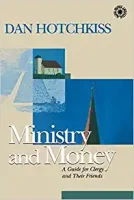
The world has changed—perhaps you’ve heard!—and congregations must adapt in order to thrive in the future. I agree, but want to add that adaptation requires creativity, and the seedbed of creativity is craft—attention to the basics handed down to us through time.
Preaching, teaching, pastoral care, administration—the craft of parish ministry covers a wide gamut. Few of us excel across the board; all of us depend on others to supply what we cannot. The craft of ministry is ancient, though the specifics vary across time, geography, and faith traditions. Craft is a way of doing things rooted in the past—but without craft, how can we tackle future opportunities? To flourish long-term, leaders need to walk the paradox of craft and creativity.
Making the Call
For example: My ministry began in the twilight years of “parish calling.” Clergy, including Dr. Greeley, my internship supervisor, felt duty-bound to make impromptu visits to parishioners (or rather, to the ladies who were thought to be “at home” at certain hours). Dr. Greeley was a true believer in the art of parish calling, and insisted that I follow his example.
I found parish calling antiquated and ridiculous. I resisted doing it, and when I did, I would phone to warn people I was coming. Some of my most treasured memories of my intern year are of those visits. I still think parish calling is outdated, but I’m grateful to have learned underlying principles behind the practice. Eventually I found ways to accomplish the same goals in ways that fit me and my era better. Still, the skill of reaching out and offering an opportunity for people to connect as Dr. Greeley did remains a crucial item in my toolbox.
As an introverted minister, I tended to wake up thinking about tasks to do rather than people to visit. At first thought my reticence meant I was indifferent to their troubles. Eventually I found a solution: I put each of my congregation’s households onto 3×5 cards. I had four stacks:
- One contained my daily people, with whom tried touch base every day.
- Weekly people
- Monthly people.
- Everybody else, with whom I tried to connect annually.
Pretty soon, to my surprise, I had a reputation for attentive pastoral caregiving. I had found a way to turn people into tasks! And to my chagrin, my new, creative system had a lot in common with the one I’d learned from Dr. Greeley.
Like parish calling, my card system had two benefits: it managed people’s expectations, calming them by helping me to be consistent. And it calmed me. Knowing I would make contact with every family in the congregation at least once a year (or if not, knowing it was their choice, not mine) gave me a sense of mastery that made me remember Dr. Greeley’s jaunty step as he went door to door.
You’ll have a different system—especially if you are more naturally extroverted than I am. My system changed over time. The cards became a Palm computer, then a Blackberry—today I use new tools and a similar approach in managing my little congregation of consulting clients. An old craft, practiced to the point of mastery, spawns new and different practices.
Craft and creativity
It’s tempting, perhaps especially when we’re young, to resist old practices on the theory that a leader’s main job is to bring change. But creativity is more than just departing from the past. Immersion daily in the craft of ministry equips us to make wise choices about how to achieve old goals in new ways. Our capacity to bring effective change DEPENDS on our engagement in the ancient craft of ministry.
Now and then, some pundit announces that some part of ministry is dead. I once taught at a seminary that embraced the death of preaching, based on the report of a committee. In the future, they decided, congregations would not sit and listen to the pastor’s so-called wisdom. That seminary actually stopped teaching homiletics for a decade. This was in the 1970s! Meanwhile, congregations continued—and continue still—to rank preaching high among the ministerial skills they look for.
Instead of wondering which parts of the ministry are done for, it’s better to ask, “What new challenges must preachers face in coming years?” As a follow-up, we can ask, “What are the core skills that preachers bring to these new challenges?” The same questions could be asked about administration, teaching, pastoral care, and justice advocates.
Depending when and where you learned to preach, you might explicate or testify, confess or lecture. Whatever school of preaching you were taught, I hope you learned to do it well, because one thing is certain: you’ll need to change it up if you continue preaching very long. When that time comes, it will be the craft that pulls you through.
The Craft of Preaching
The craft of preaching includes speaking in your hearers’ language with a clarity most of them can’t reach, meeting expectations so you’ll earn the power to transcend them, connecting with the lived experience of your congregants so they’ll trust your invitation to connect with something wider, older, higher. The preacher’s craft also includes the basic skills of writing: grammar, rhythm, composition—and of the performing arts: posture, breathing, focus, eye contact.
Even if one day that seminary turns out to be right, and we need to invent some wholly other way to do what preaching used to do—be sure to bring all your craft and quality control to that task just as you brought it to the old-time pulpit.
As a consultant, I’ve worked with a wide range of religious people. I worked, for example, with a Christian Science church. They wanted to work on a strategic plan, but some members objected that they had a plan already. I asked to see that plan, and they handed me a copy of the Church Manual, published in 1910 by Mary Baker Eddy.
I could see why planning seemed irrelevant—Mrs. Eddy had laid out the work of a branch church in some detail—worship, Sunday school, lectures, and a reading room. What else was there to plan?
Blueprints of the Church
In some ways this was strange and new to me, but on reflection it felt quite familiar. Don’t most of us carry blueprints of what “church” looks like? And don’t most of those blueprints date from the 1990s, 1960s, 1920s, or even earlier?
And so instead of focusing on the limitations in the Manual, we started to ask, “What would a Christian Science Reading Room look like today?” (It helped that I could point out that in 1910, reading rooms were a feature of many denominations, not just Christian Science.) We asked, “What skills have we developed in our years of holding public Lectures at our church on Wednesday nights?” (Someone searched the Manual and noticed Mrs. Eddy had not specified the place or schedule, or even the precise subject matter. The next lecture, on the challenges of parenthood, was held in a public auditorium on a Saturday, with activities for children.
You may be challenged—as I was—by the thought of helping a religious body as distinctive as the Christian Science Church think creatively about their mission. But being challenged is what visionary leadership is about. A good place to begin is with the skills and habits that were handed down to you, the craft of ministry that you have diligently practiced, asking, “How can I use this craft in new ways to address new challenges?”
Dan Hotchkiss has consulted with a wide spectrum of churches, synagogues, and other organizations spanning 33 denominational families. Through his coaching, teaching, and writing, Dan has touched the lives of an even wider range of leaders. His focus is to help organizations engage their constituents in discerning what their mission calls for at a given time, and to empower leaders to act boldly and creatively.
Dan coaches leaders and consults selectively with congregations and other mission-driven groups, mostly by phone and videoconference, from his home near Boston. Prior to consulting independently, Dan served as a Unitarian Universalist parish minister, denominational executive, and senior consultant for the Alban Institute.


